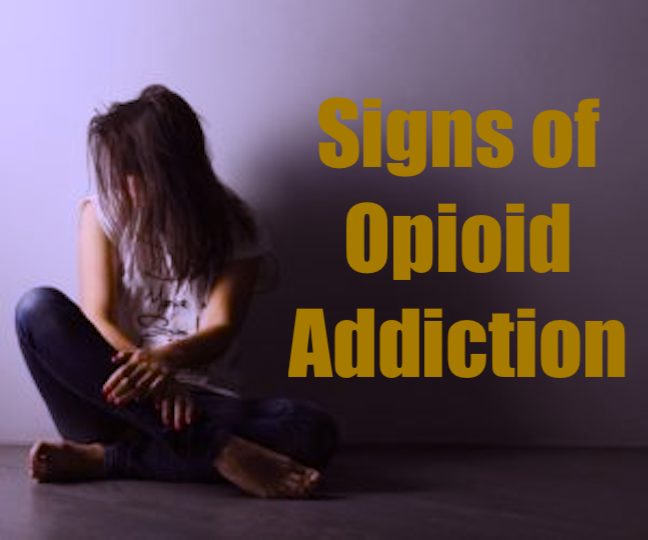Opiates include prescription drugs such as hydrocodone, fentanyl and morphine. These substances are effective pain relievers when taken as directed by a physician. However, the calming effects that opioid painkillers produce are habit-forming and can lead to future patterns of abuse.
Unfortunately, this slippery slope can lead to heroin addiction. Tragically, many overdose fatalities are now being driven by heroin laced with fentanyl, or similar compounds which are even more powerful and deadly. Nearly half of young people who inject heroin start by misusing prescription (Rx) pain medicine, also known as opioids. Some teens start by misusing it with friends because they’re curious, to self-medicate or because they think it will make them feel good. Others start taking it legitimately when prescribed by a doctor after an injury or medical procedure. But in some cases, legitimate use turns to dependence, misuse, addiction and then heroin use.
Detecting drug abuse early on is the most effective way of preventing an addiction from developing. With the opiate epidemic in our country right now taking so many lives everyday. Early detection of signs of heroin use and heroin detox treatment can life saving for the individual struggling with opiate addiction.
1. BEHAVIORAL CHANGES
Behavioral changes are often the first signs of opiate addiction. The person may avoid making eye contact and become distant with friends or family. You may notice dramatic mood swings, quickly becoming irritable, or on edge then suddenly will become excited or euphoric. They will go through sudden changes in energy, one minute they will be calm and happy, then can become angry and hostile.
2. FINDING DRUG PARAPHERNALIA
Opioids can be taken orally, snorted, smoked and injected. There are items to be on the lookout for though. Piles of burned foil, you will notice black lines on the foil, medication bottles with labels that have been ripped off, small cotton swabs, or needles.
3. PROBLEMS WITH RELATIONSHIPS AND CHANGE IN PERSONALITY
Someone with opiate addiction may appear confused, disoriented and have trouble concentrating. These behaviors are signs of opiate addiction and will adversely affects relationships and other aspects of life. They’re slow to respond, ignore obligations, or become completely isolated from the outside world. They stop picking up the phone and going to social events. They neglect their personal hygiene and appearance. Opioid use comes before everything else, even friends and family. They lack awareness of the people and things around them, are inattentive and are no longer interested in life or the things they used to enjoy doing.
4. CHANGE IN APPEARANCE
Opioid abuse drastically affects the physical appearance of an individual who is under the influence of the drug. Changes in physical appearance can include weight loss or weight gain, slurred speech, slowed breathing, and problems with coordination and balance. They stop caring about how they look and commonly may appear to have just rolled out of bed.
5. WITHDRAWAL SYMPTOMS AFTER STOPPING USE OR BECOMING DOPE SICK
Withdrawal symptoms occur after a person develops a physical or psychological dependence on opioids. This is often referred to as being dope sick, and is characterized by intense flu-like symptoms that are unbearably painful. Dope sickness typically hits after someone goes without their drug of choice for 6 to 12 hours. Symptoms usually peak within three to four days. This period of purging the body of drugs is called detox. Once a user has detoxed, they’re over the worst of the immediate physical withdrawal symptoms and can begin dealing with the other mental, emotional, and physical side effects of addiction.
Symptoms of dope sickness – and their intensity – can vary by person, drug of choice, and the amount of drugs used on a regular basis. However, common signs of dope sickness include:
- Nausea, vomiting, diarrhea and/or constipation
- Loss of appetite/huge return of appetite
- Hot and cold flashes
- Muscle aches and spasms
- Sensation of bugs crawling on or under skin
- Hyper-awareness
- Dry mouth
- Headaches
- Insomnia
- Sweating
These physical effects are often accompanied by mental and emotional symptoms. Those who are dope sick may feel given below experience Dope sick symptoms:
- Agitation
- Anxiety
- Paranoia
- Frustration
- Depression
- Despondency
Family members and loved ones are often key players in getting someone into alcohol rehab in los angeles,CA. Although there may be hindrances to lending help, such as denying the existence of the problem as a coping mechanism, witnessing the signs and symptoms of drug abuse will often motivate a concerned person to action. Also, when a person knows the particular drug of abuse, they can deepen their understanding of that drug and learn additional ways to help their loved one.
Are you looking to overcome alcohol and substance abuse? Pax House is a facility providing a calm environment for detoxification, drug rehab, and aftercare planning. We’re located in the foothills of Altadena, and we take pride in having highly-trained, licensed, certified and compassionate clinicians and staff members. All our treatment services are tailored to the needs of every client. For more information, call us at (877)–789-5592.


